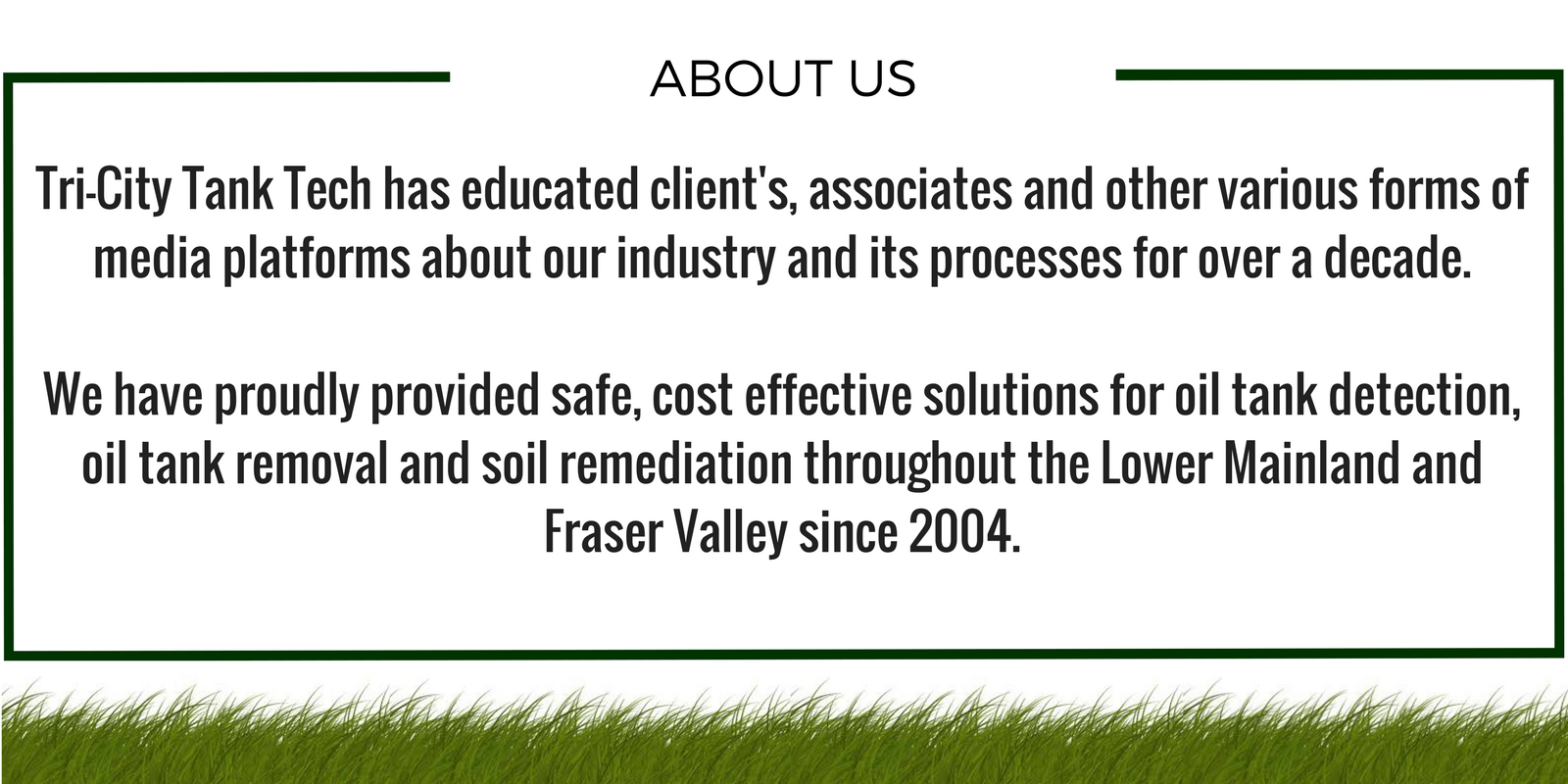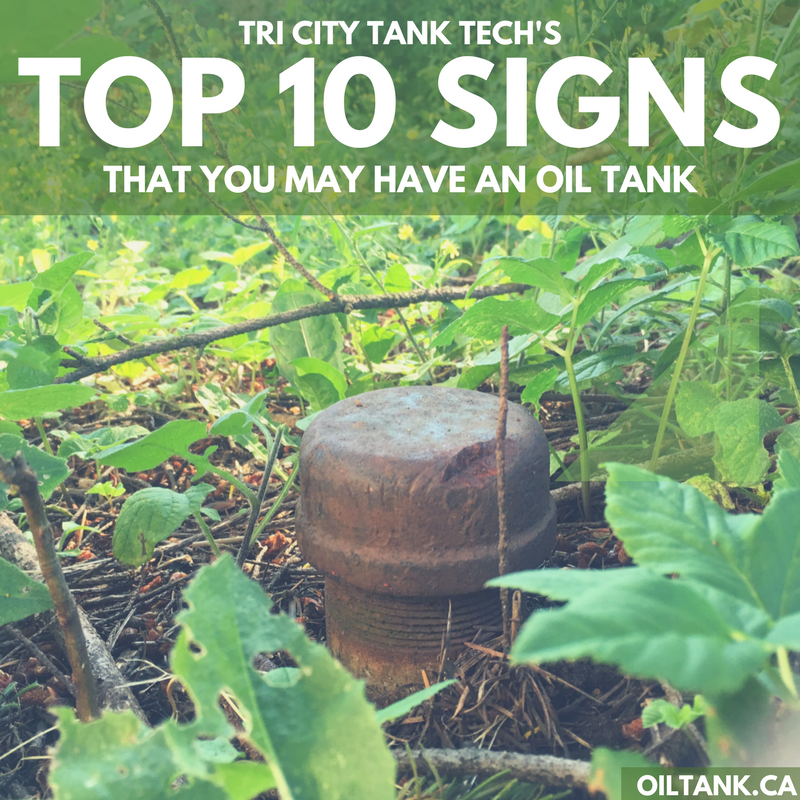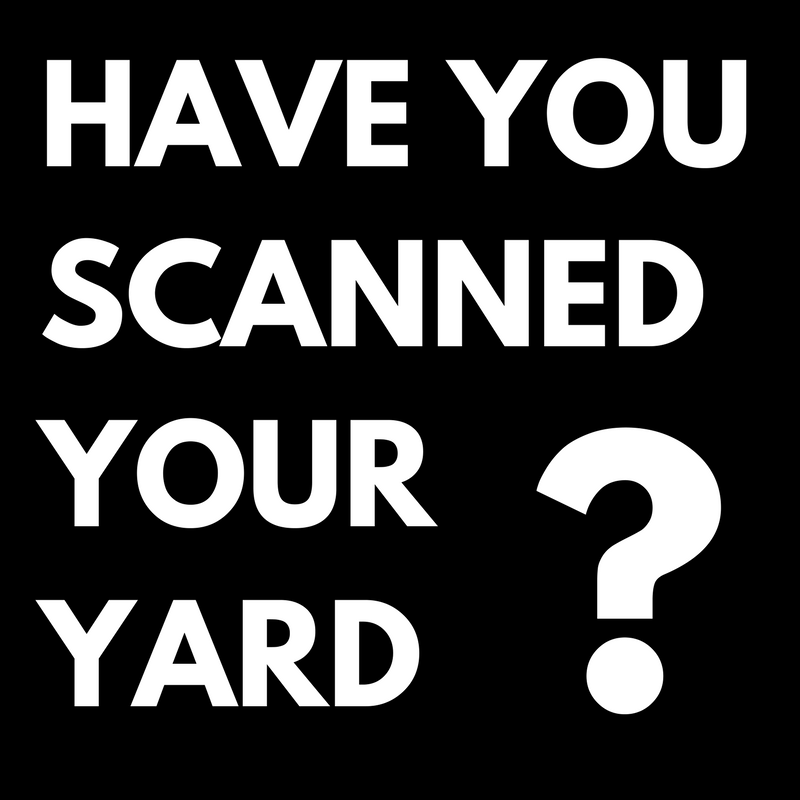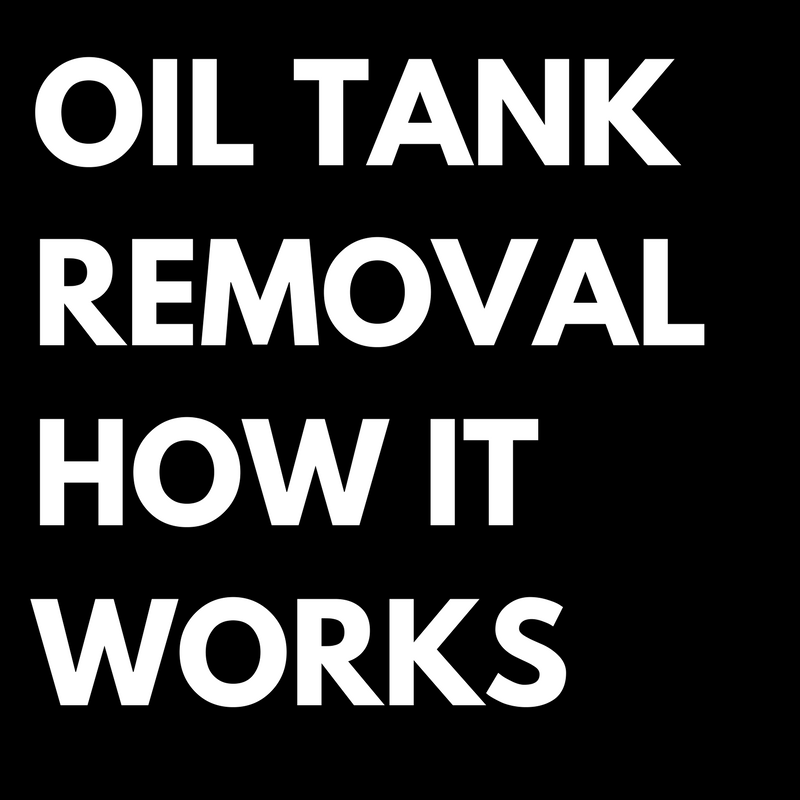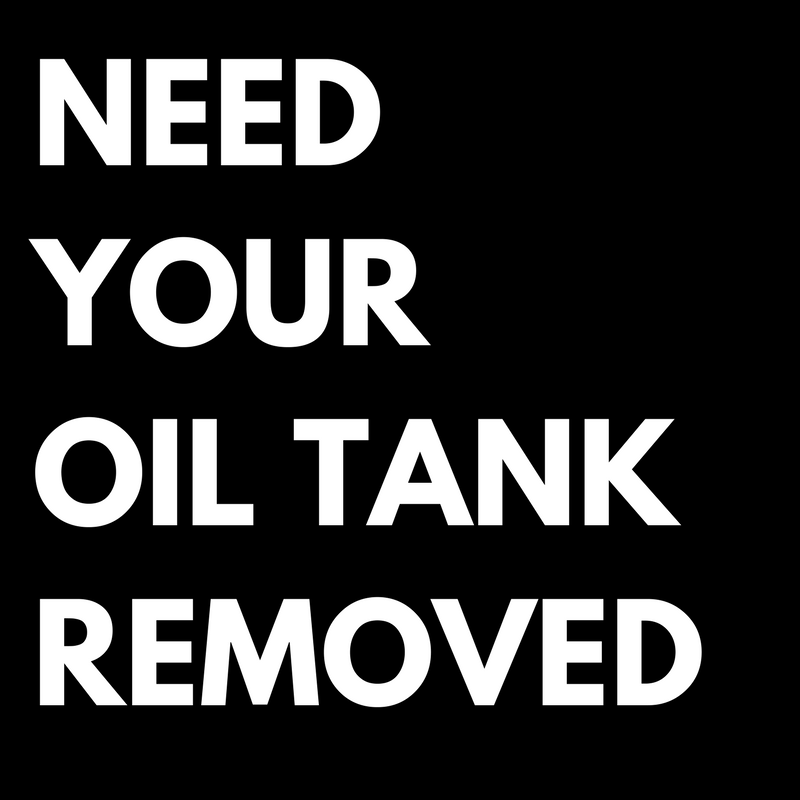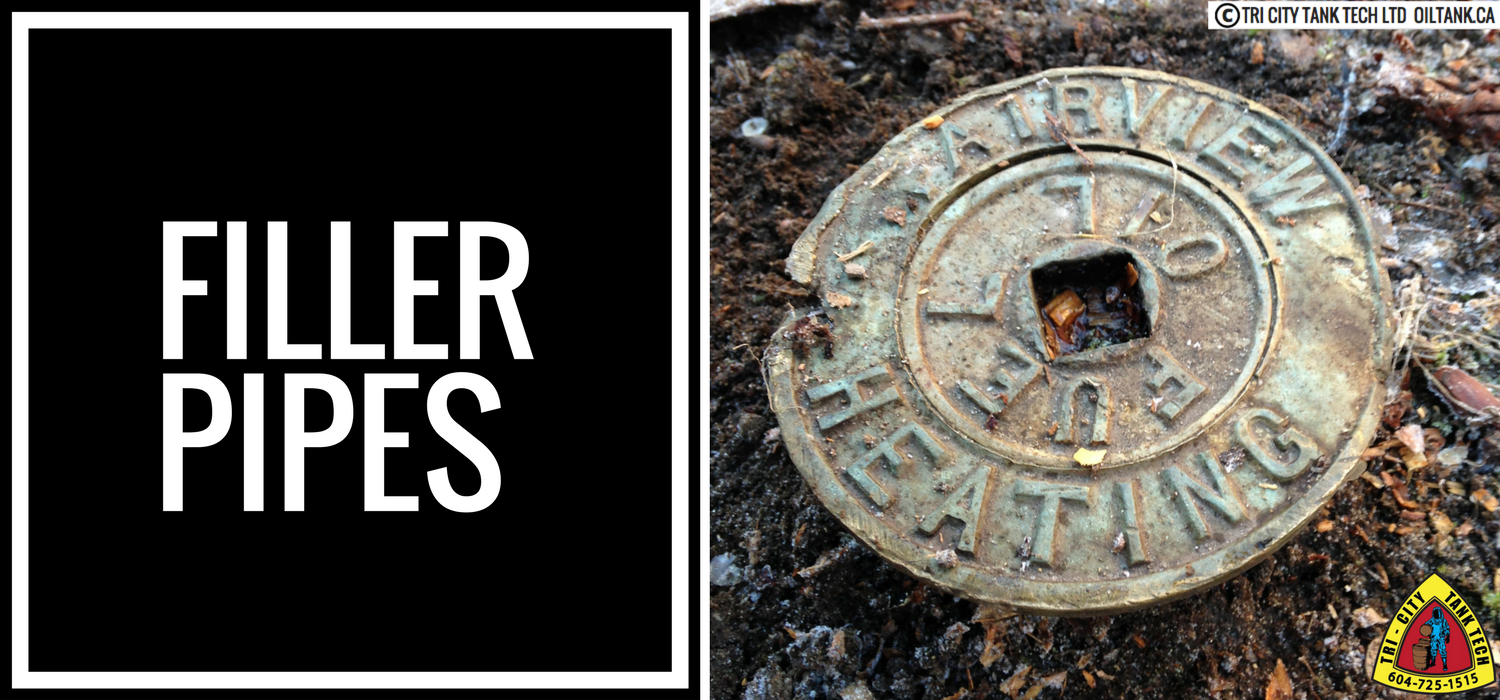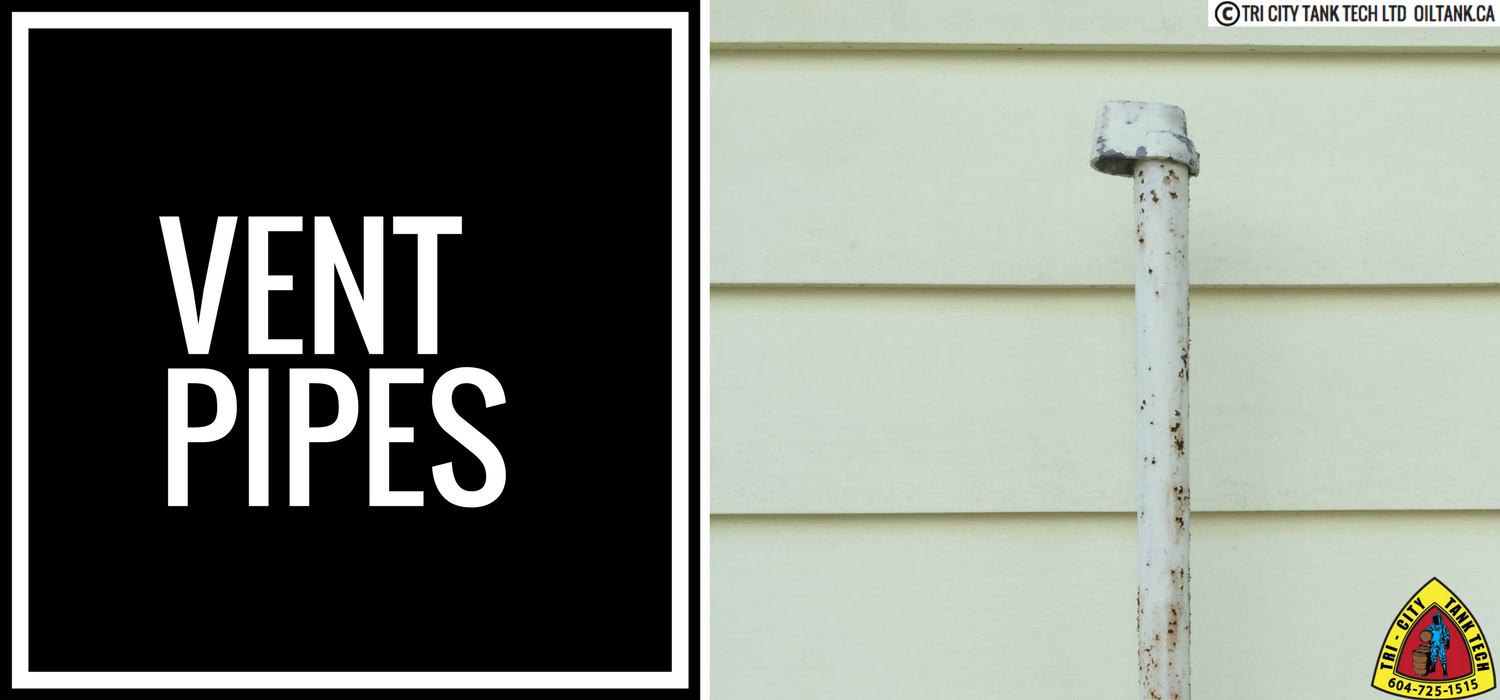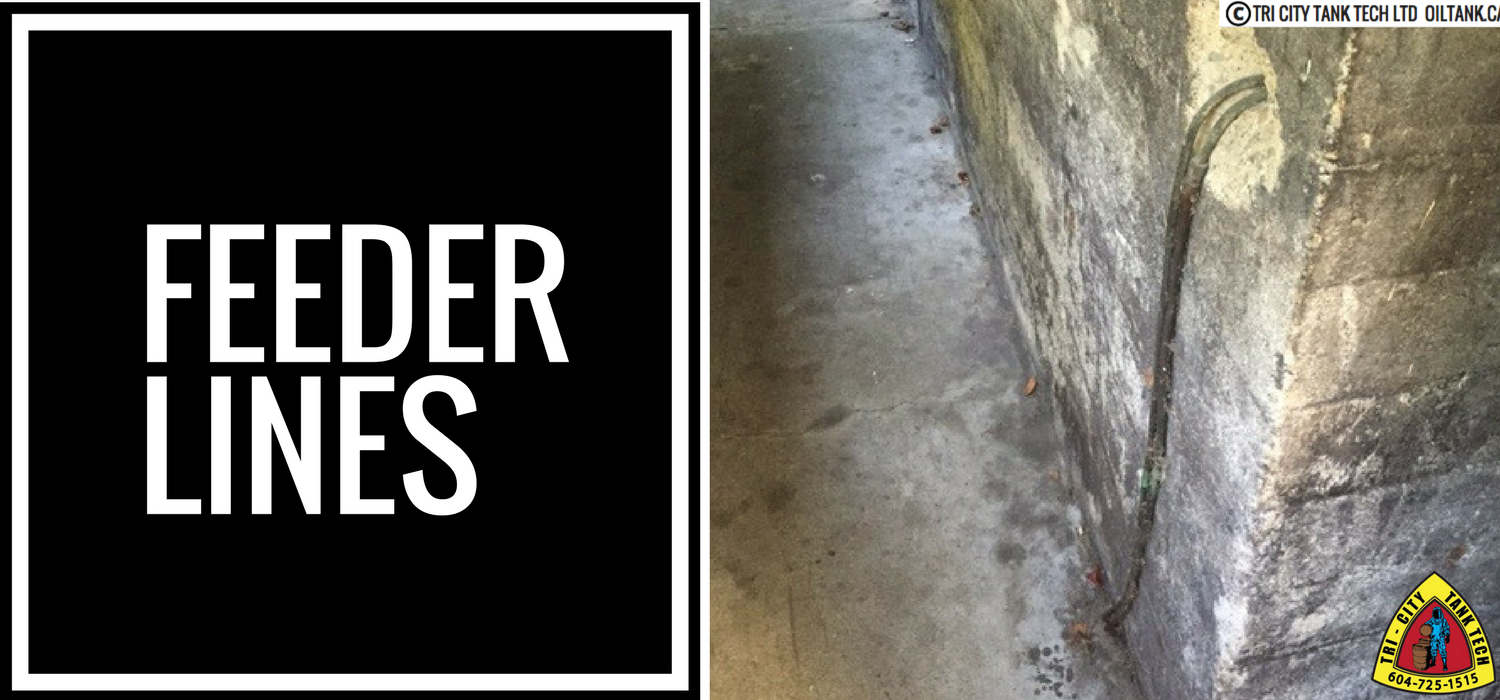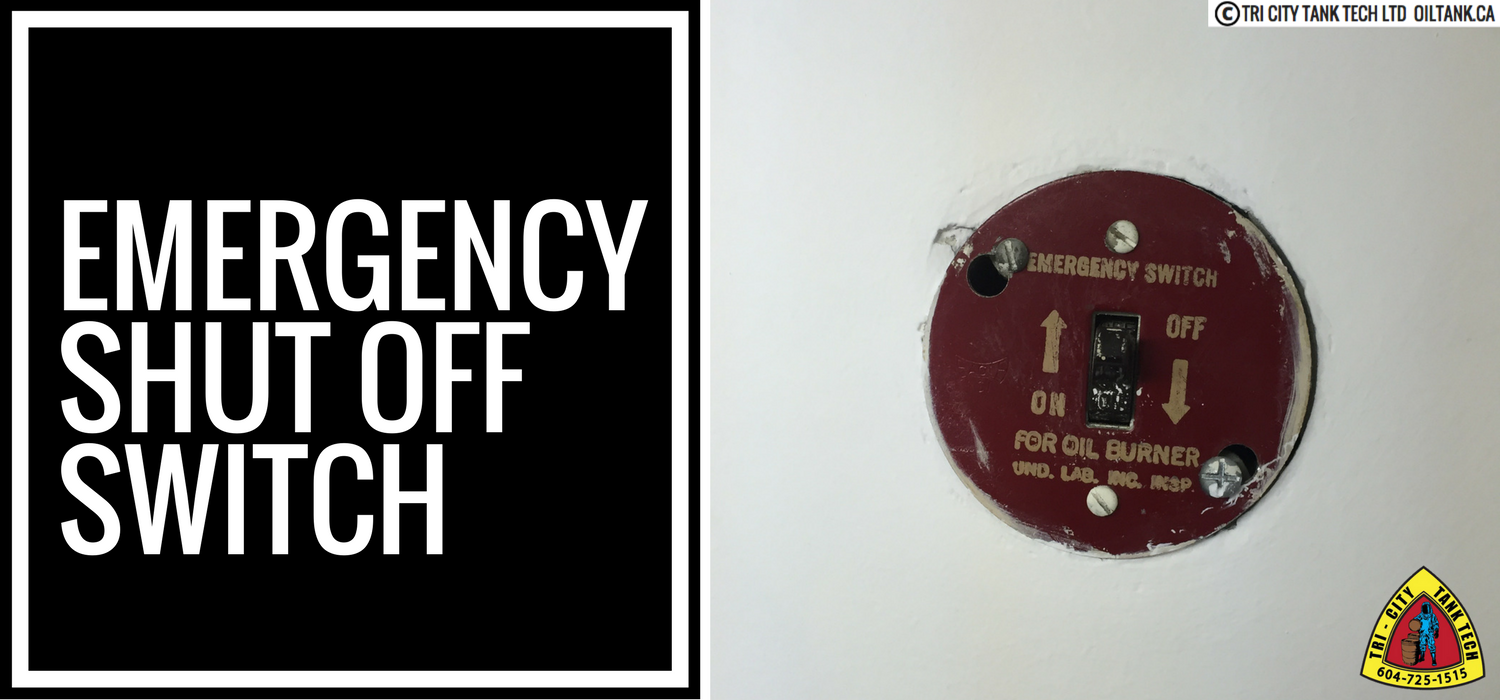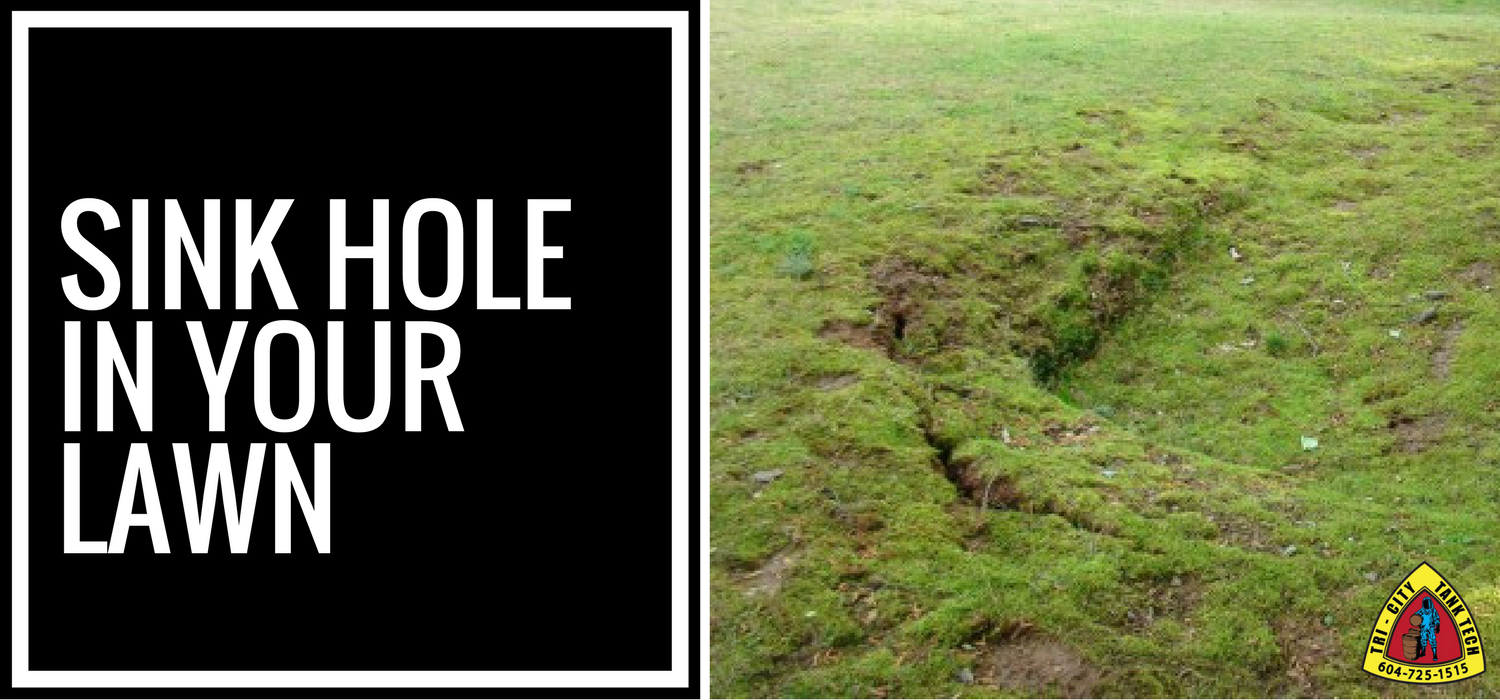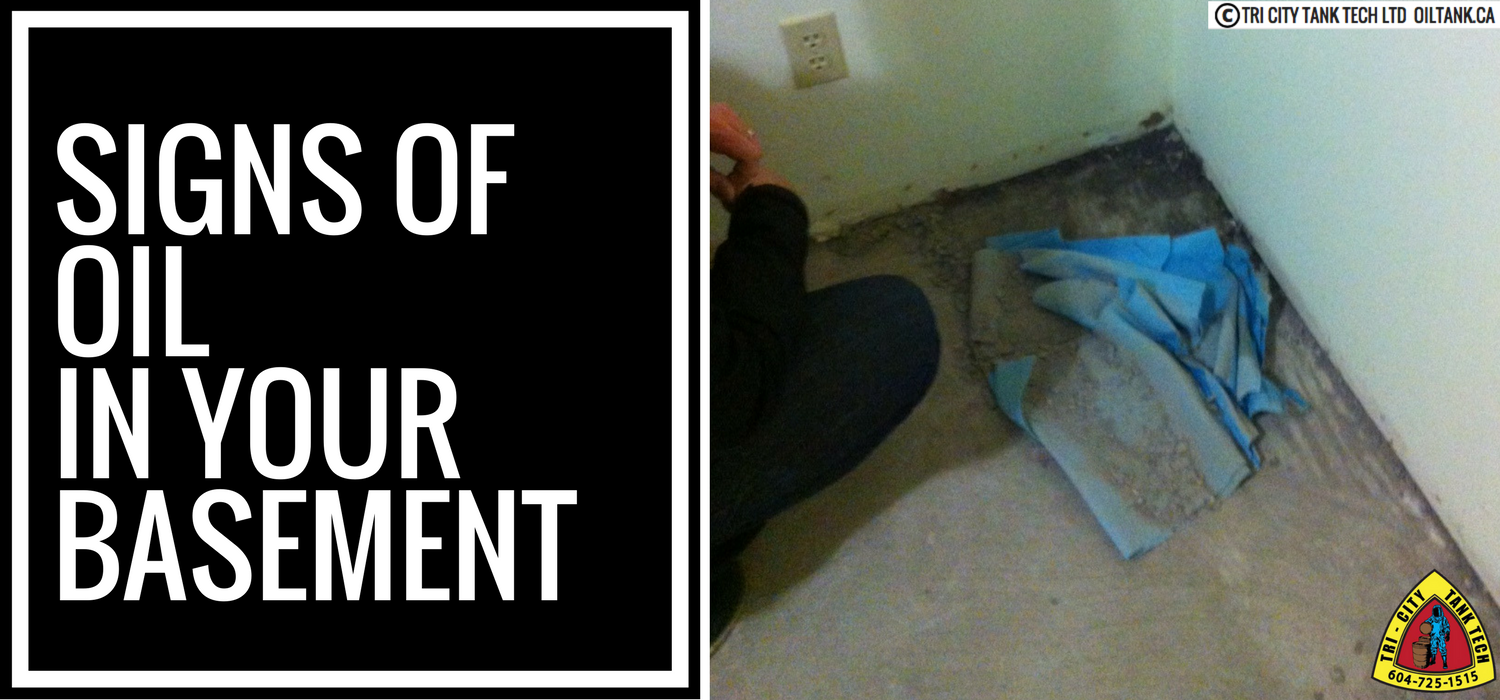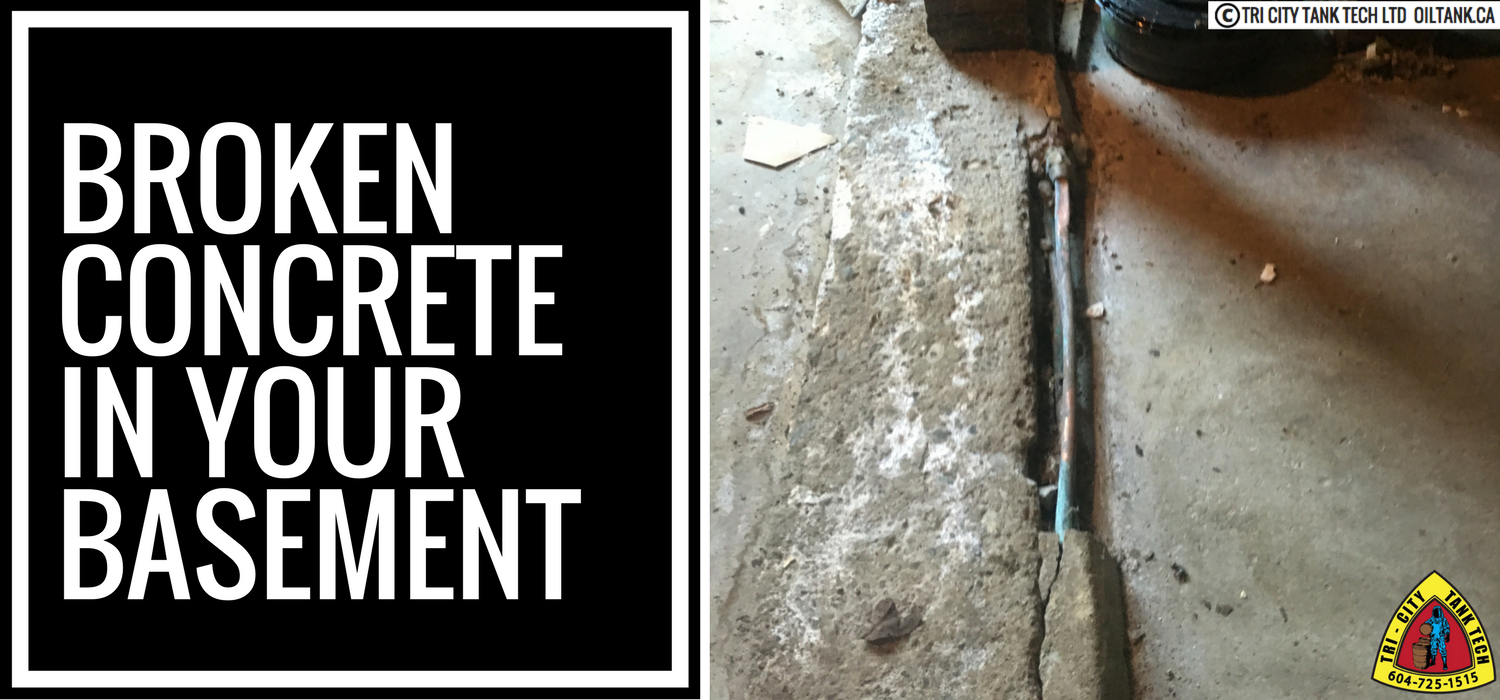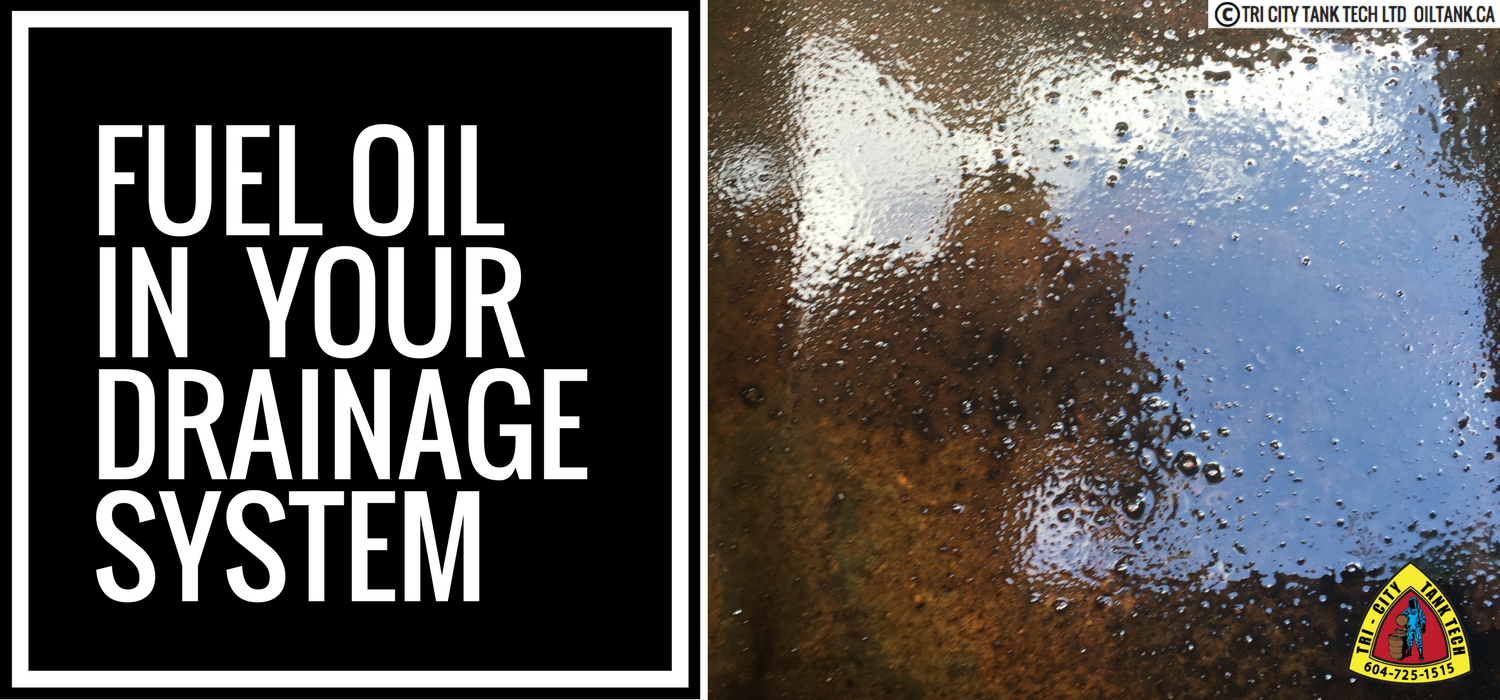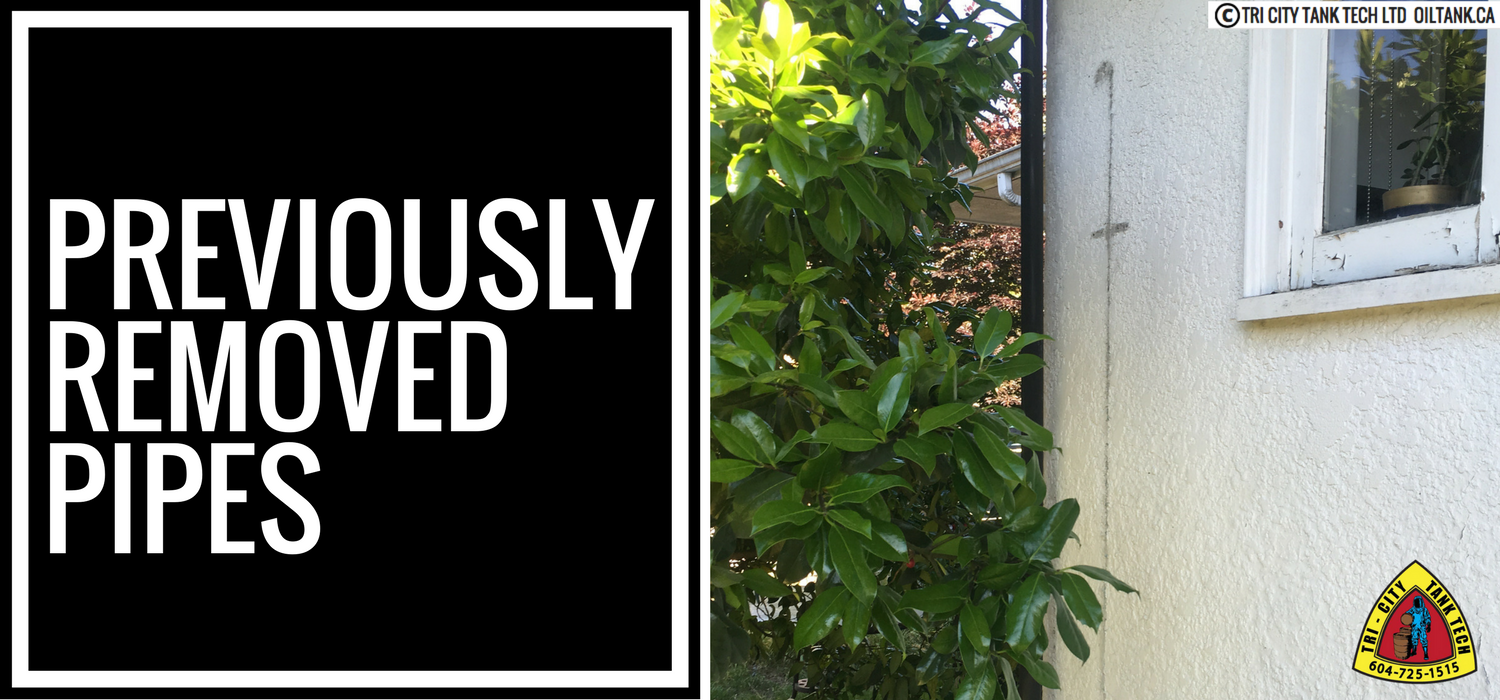With increasing public awareness regarding the topic of oil tank removal and oil tank detection in the Greater Vancouver and Fraser Valley area, many property owners are becoming more pro-active in the search to see if they have an oil tank on their property.
Historically, home owners did not get an oil tank detection until they were going to sell their property because they were unaware that an oil tank could even exist their property.
Usually, property owners are made aware of this possible issue when they decide to sell their home or renew there home insurance and are asked to produce an oil tank detection certificate.
However, as property owners are starting to become more aware of this issue, many home owners are trying to address this situation before it becomes a bigger problem.
The purpose of this article is to inform you about some of the most common signs of an oil tank that you may see on your property.
If you notice any of these indications of an oil tank on your property, you may want to get an oil tank detection sooner than later to help identify if you have an oil tank on your property.
When it comes to oil tank removal, we feel its better to be proactive than reactive.
Being proactive about oil tank removal can potenially save you money.
The longer that an oil tank is left buried underground can increase the risk of it leaking oil into the surrounding soils.
On the positive side, if no oil tank is on your property, you will have piece of mind and an oil tank detection certificate for any future inquires.
Important note
An oil tank detection is the best way to determine if you have an oil tank on your property.
Indications of an oil tank presence can be removed or not visible.
This is why it is important to get an oil tank detection done by a professional oil tank removal company.
WHY CHOOSE US
FIND OUT WHY TRI CITY TANK TECH IS THE PREFERRED CHOICE OF REALTORS, BANKS, HOME INSPECTORS AND MORE...TRI CITY TANK TECH | YOUR OIL TANK REMOVAL EXPERT
- COMPETITVE PRICING
- FREE QUOTES
- QUICK RESPONSE TIMES
- KNOWLEDGABLE STAFF
- EXPERIENCED
- HIGH QUALITY EQUIPMENT
- QUALITY SERVICE
- A+ BBB
- INSURANCE COVERAGE
- WORKSAFE COVERAGE
1st Sign That You May Have An Oil Tank
Filler Pipes
About filler pipes…
Filler pipes were the access point to add fuel to the oil tanks when they were in service.
These pipes are typically present approximately 6ft to 8ft from the original structure.
Usually, filler pipes are approximately 2 ¾ inches in diameter, within inches of ground level and can vary in style.
What to look for…
Look for a pipe or cap that is usually about 6ft – 8ft from the structure, approximately 2 ¾ inches in diameter.
It is important to note that over time the surrounding soil, vegetation, or grass can build up and over the filler pipe. If this happens, you may not be able to easily notice your filler pipe through a visual inspection.
Many times, if the filler pipe has not been removed it may be buried just below the surface of the ground.
Friendly Reminder
An oil tank detection is the best way to determine if you have an oil tank on your property.
Indications of an oil tank presence can be removed or not visible.
This is why it is important to get an oil tank detection done by a professional oil tank removal company.
2nd Sign That You May Have An Oil Tank
Vent Pipes
About vent pipes…
Vent pipes were used to vent excess vapours from the interior of the tank, lowering the risk of vapour build up, mitigating the risk of explosion.
Additionally, these pipes also allowed airflow into the tank, aiding in the conveyance of oil to the burner through the feeder lines.
Vent pipes are usually attached to the house vertically and slope underground to the oil tank.
Vent pipes are usually approximately 1-¾ inches in diameter and have an open cap on the top. This open cap helped to keep water and debris from entering the oil tank, while allowing air and vapors to flow freely without interruption.
What to look for…
Usually, property owners have seen these pipes many times but didn’t know what they were.
Vent pipes will typically be attached to the house vertically on the outer wall of the structure.
Look for a pipe attached vertically to the house with unknown origins or a pipe that has been cut off or capped approximately 1-¾ in diameter.
It is important to note that many times because home owners did not know what the vent pipe was, they would paint over their vent pipe when painting the exterior of the structure.
If the vent pipe is painted the same color of your stucture it can blend in to its background and go unnoticed for years.
Other times, home owners may have just removed the vent pipe, thinking that it was an random, inactive pipe.
Important note
An oil tank detection is the best way to determine if you have an oil tank on your property.
Indications of an oil tank presence can be removed or not visible.
This is why it is important to get an oil tank detection done by a professional oil tank removal company.
3rd Sign That You May Have An Oil Tank
Feeder Lines (Supply Lines)
About feeder lines…
These supply lines fed fuel oil into the oil burner from your oil tank.
Feeder lines are usually made of copper and are approximately ¼ to ½ inches in diameter.
Typically, Underground Storage Tanks (UST) will have 2 feeder lines and Aboveground Storage Tanks (AST) will have 1 feeder line.
Feeder lines are usually buried underground and were many times removed when the home was converted to natural gas. Many times the visual indicators will be as a result of these supply lines being removed.
What to look for…
Look for copper feeder lines that are approximately ¼ to ½ inches in diameter, leading from the furnace area to the foundation of the structure.
The visible signs of these supply lines that may be present are:
- Crimped or noticable feeder lines coming out of the floor near the furnace or out of/near a foundation wall.
- An area of replaced concrete that leads from the furnace area to the foundation wall. Broken or replaced concrete could indicate that someone previously dug in that area to remove the lines and the concrete was replaced in that area. Please refer to the 7th indicator in this post for pictures
Important note
An oil tank detection is the best way to determine if you have an oil tank on your property.
Indications of an oil tank presence can be removed or not visible.
This is why it is important to get an oil tank detection done by a professional oil tank removal company.
4th Sign That You May Have An Oil Tank
Oil Burner Emergency Shut Off Switches
About emergency shut off switches…
If there was an emergency: fire, earthquake etc. this switch could quickly stop the fuel supply to the oil tank, mitigating risks or prevent damages.
Addtionally, this switch was used while servicing your oil tank.
Many times these switches may have been removed when the property was converted to natural gas or during renovations.
What to look for…
This toggle switch box would be located typically near the furnace room. Many times the panel of the switch box is red and will read “Oil Burner Emergency Switch”
Important note
An oil tank detection is the best way to determine if you have an oil tank on your property.
Indications of an oil tank presence can be removed or not visible.
This is why it is important to get an oil tank detection done by a professional oil tank removal company.
5th Sign That You May Have An Oil Tank
Depressions In The Ground
How an oil tank can cause a depression in the ground…
Over time in rare extreme cases, your oil tank can collapse from years of deterioration and the weight of the soil that is above the oil tank.
It is important to note that if a depression is found on your property, it can be as a result of many different types of issues and it does not necessarily mean that you have an oil tank on your property.
What to look for…
If you notice a depression that has happened recently or an area on your property that has consistently sunk over time, you may want to get an oil tank detection sooner than later.
Whether the depression is caused by an oil tank or not, the sooner you troubleshoot this issue, the less likely that it will become a bigger problem.
Important note
An oil tank detection is the best way to determine if you have an oil tank on your property.
Indications of an oil tank presence can be removed or not visible.
This is why it is important to get an oil tank detection done by a professional oil tank removal company.
6th Sign That You May Have An Oil Tank
Signs Of Oil In Your Basement
How fuel oil can enter your basement…
It is not common for an oil tank to leak into your basement;however, because oil tanks are usually buried quite close to the structure, there is always a risk that this may happen.
Many times this is reported during heavy periods of rain due to the higher volume of water going through your property.
What to look for….
The first sign that you may notice is a sudden odour of fuel oil in your basement.
Secondly, you may see oil leaking through cracks in your foundation or concrete floor.
Additionally, if you have a sump in your basement you may notice odor or fuel oil sheen with the sump.
Important Note: If you notice any of these signs we feel that the situation should be dealt with immediately for health and safety purposes.
7th Sign That You May Have An Oil Tank
Broken Or Replaced Concrete Path In Your Basement
The reason that concrete was broken or replaced…
When natural gas was installed many times the technician would disconnect and crimp the feeder lines to your oil tank near the furnace and/or foundation wall.
Sometimes they would break a trench of concrete from the furnace to the foundation wall and remove the interior lines completely.
What to look for…
Look for a trench from the furnace area leading towards the foundation. You may notice a new patch of concrete in the area or possibly no concrete at all.
8th Sign That You May Have An Oil Tank
Fuel Oil In Your Drainage System
The reason that oil can leak into drainage systems…
There is always a chance that your oil tank could have leaked into your drainage system because they are usually within close proximity to each other
What to look for…
If you notice an oil smell or oil sheen in the clean out of your drainage system, we feel you should get your property scanned for an oil tank as soon as possible.
Important Note: If you notice any of these signs we feel that the situation should be dealt with immediately for health and safety purposes.
9th Sign That You May Have An Oil Tank Dead Or Evidence Of Oil On Your Grass
How an oil tank can kill your grass….
Grass roots are usually quite shallow in comparison to how deep oil tanks were buried. The 2 main reasons that your grass may die in the area of the oil tank over time are:
Spilled fuel oil
When oil tanks were in service, occasionally during the filling process the fuel oil supplier may have accidentally overfilled the oil tank or spilled fuel oil near the filler pipe.
This may have resulted in the grass and/or vegetation in the area of the filler pipe dying over time.
High water table
In some rare occasions, the water table can be quite high on a property causing the contamination to spread in all directions.
If the fuel oil is pushed to the surface due to the high water table, there is a risk that surrounding grass and vegetation in the area could be affected.
What to look for…
If you have a random patch of dead grass approximately 6ft to 8 ft from your structure that will not regrow that is a chance that you could have an oil tank on your property.
Additionally, if you smell oil in your yard, notice oil sheen on your grass or fuel oil coming up from the ground, there is a probability that you may have an oil tank on your property
Important Note: If you notice any visual or smell of oil on the surface of the ground, we feel that the situation should be dealt with immediately for health and safety purposes.
10th Sign That You May Have An Oil Tank
Evidence Of Oil Tank Related Pipes Removed
Common reasons that pipes get removed…
Unfortunately, it is common that oil tank pipes, lines or switches may have been removed over time.
Some of the most common reasons that oil tanks pipes, lines, and switches have been removed are:
- Tripping hazards
- Aesthetic purposes or renovations
- Not knowing what the pipe was for
- To hide the evidence of a buried oil tank on the property
- A previous oil tank abandonment
- Conversion to natural gas
Important Note: These top 10 signs are just a guideline of what to look for on your property. The best way to determine if you have an oil tank on your property is to get an oil tank detection.

Matthew Szwaba
Chief Operating Officer
604-715-1000
Tri-City Tank Tech ltd
